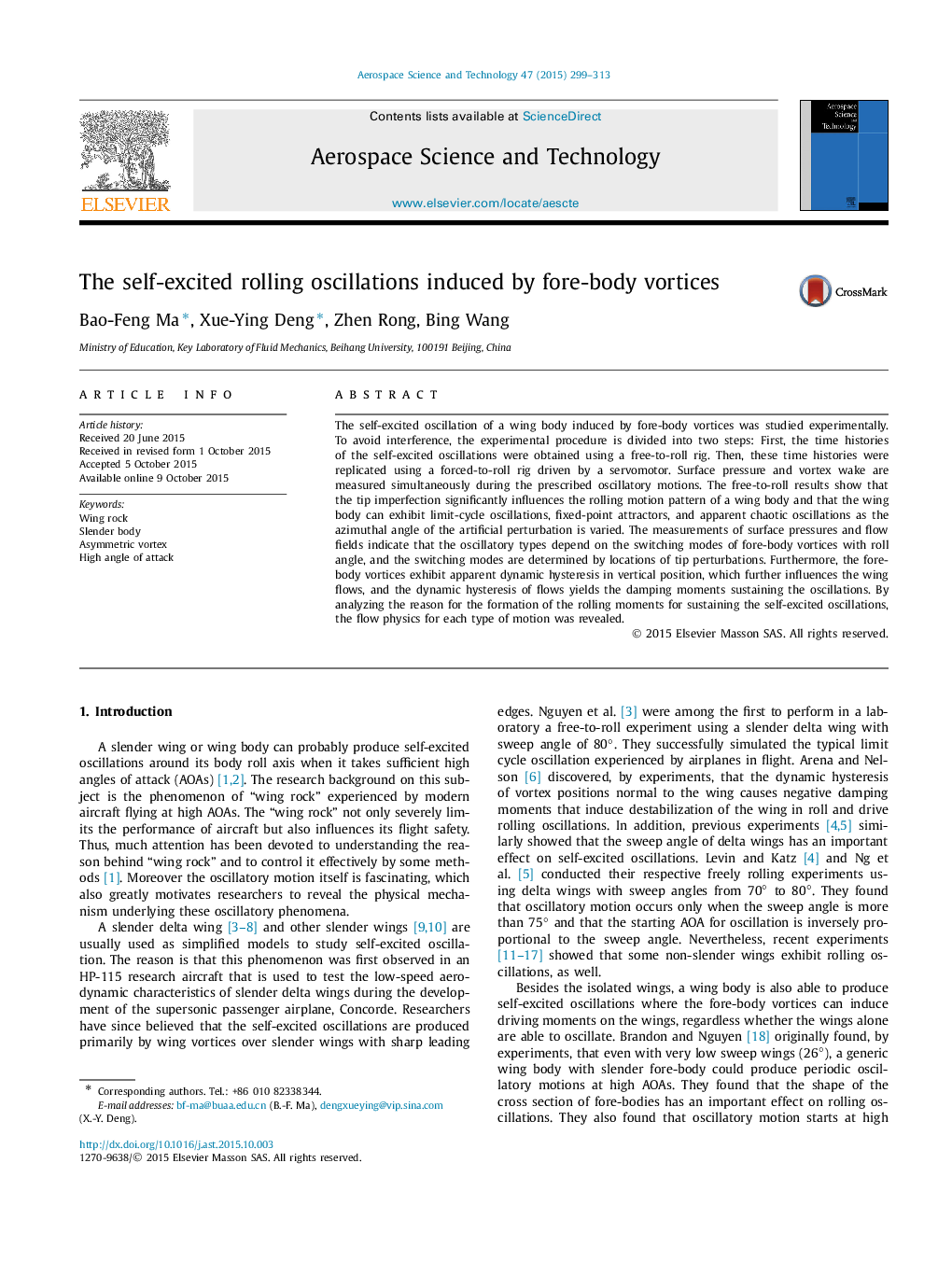| Article ID | Journal | Published Year | Pages | File Type |
|---|---|---|---|---|
| 8058740 | Aerospace Science and Technology | 2015 | 15 Pages |
Abstract
The self-excited oscillation of a wing body induced by fore-body vortices was studied experimentally. To avoid interference, the experimental procedure is divided into two steps: First, the time histories of the self-excited oscillations were obtained using a free-to-roll rig. Then, these time histories were replicated using a forced-to-roll rig driven by a servomotor. Surface pressure and vortex wake are measured simultaneously during the prescribed oscillatory motions. The free-to-roll results show that the tip imperfection significantly influences the rolling motion pattern of a wing body and that the wing body can exhibit limit-cycle oscillations, fixed-point attractors, and apparent chaotic oscillations as the azimuthal angle of the artificial perturbation is varied. The measurements of surface pressures and flow fields indicate that the oscillatory types depend on the switching modes of fore-body vortices with roll angle, and the switching modes are determined by locations of tip perturbations. Furthermore, the fore-body vortices exhibit apparent dynamic hysteresis in vertical position, which further influences the wing flows, and the dynamic hysteresis of flows yields the damping moments sustaining the oscillations. By analyzing the reason for the formation of the rolling moments for sustaining the self-excited oscillations, the flow physics for each type of motion was revealed.
Related Topics
Physical Sciences and Engineering
Engineering
Aerospace Engineering
Authors
Bao-Feng Ma, Xue-Ying Deng, Zhen Rong, Bing Wang,
